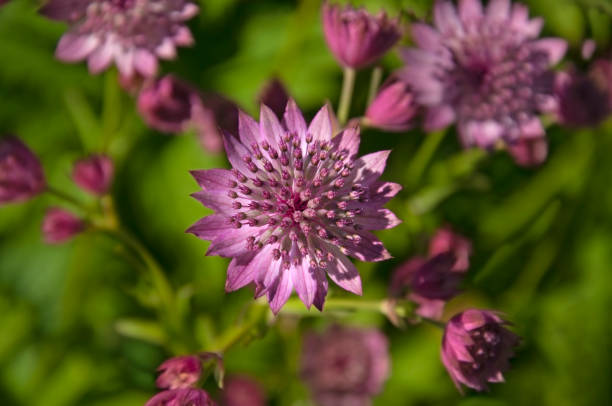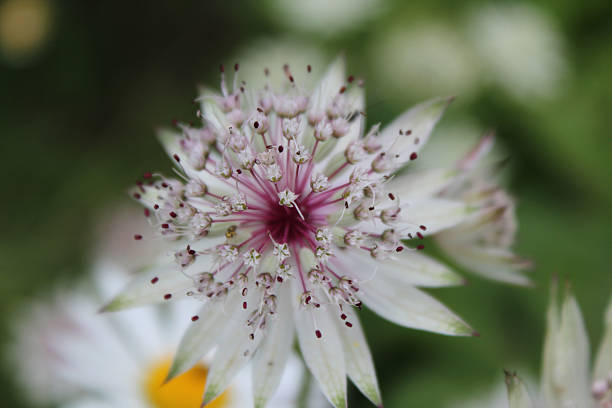Best Growing Conditions for Astrantia
Looking for the best growing conditions for Astrantia? You’ve come to the right place! This article will detail the best way to care for Astrantia plants and help you choose the perfect spot for your garden. So whether you’re a beginner or an experienced gardener, this article is for you. Read on to learn more!
Table of Contents
Growing Requirements for Astrantia

Sun Exposure
Astrantia thrives in part-shade, well-drained soil that is constantly moist and rich in organic matter. The plant should receive morning sun for a few hours, followed by afternoon shade. In full shade, the plants will not produce many flowers.
Soil
It prefers slightly acidic soil, but it can also grow in heavy clay soils. It is ideal if the soil is loamy and rich in organic matter. It should be able to retain moisture while also removing any leftover liquid. To improve the soil, you can add organic materials like compost, dried leaves, or coffee grounds. Coffee grounds have the added benefit of acidifying the soil, which is beneficial to the plant’s growth.
Ensure that the crown of the Astrantia plant is buried at least a half to one inch below ground level when planting. Fill in the space with loose soil, being careful not to compact it too much. Mulch can be used to increase moisture retention even further.
Water
Astrantia can survive on its own, even if it’s going dry in the middle of summer. This makes it an excellent choice for outdoor gardens or pots that are outside all year. Water is required throughout the growing season to keep plants soaring high and healthy during warmer months when humidity is low but not absent entirely. Once a week will suffice for most Astrantia varieties established – you can improve moisture retention by using mulches as they can retain water. They need water if there is not enough rain to keep the soil moist. It’s a plant that can be used in a lot of different places. It can even stand some water, so it could be used near a bog garden.
Great masterwort plants can grow in soil that is always wet. This is different from other perennial species. This makes them one of the best plants to have in your home! If you’re just starting out in the garden, these flowers are the best choice for you to grow with. If you water your plants too much a few times, they won’t hesitate to forgive you right away.
To keep your great masterwort plants alive and well during the hot and dry summer months, you must water them often. Usually, these flowers don’t do very well when there is a lot of rain. When they get less water than they need, their leaves will turn yellowish-brown. Also, they will have a lot fewer blooms.
As a general rule, you can’t go wrong if you check the soil before water it. You should give your plants a good soak when the soil is dry. During the winter, these plants go dormant, which means you don’t have to water them as much.
Location
This plant grows best in USDA hardiness zones 4 to 9. Even though the plants can withstand harsh winters and a wide range of growing conditions, they will not thrive in high humidity and heat conditions.
Temperature and Humidity
A good place to grow is in a place where nighttime temperatures don’t get above 70°F (21.1°C). Most of the Upper Midwest would be a good place for this. If you live in a hot place, you might want to spread a two- or three-inch layer of mulch over the soil to keep it moist longer. A lot less water will evaporate, which means that your masterwort plant will have more water.
Fertilizer
It doesn’t need fertilizer to grow well, but it might have some nitrogen-bearing compounds. If you want to fertilize the Astrantia, though, ensure that your soil isn’t too acidic before doing so. For example, adding a pinch of sulfuric acid would be good in these circumstances as the Astrantia is prone to fungal, bacterial diseases – if there are any existing problems with sawdust tea, know this will only exacerbate them. Early in the spring and mid-summer are good times to feed plants.

Pests and Disease Problems
The Masterwort plant doesn’t have any very bad diseases or pests. However, be on the lookout for slugs and aphids, like its leaves. In addition, powdery mildew could make the plan less likely to work.
Propagating Astrantia
In the spring or fall, you must remove your mature Astrantia plants from the ground and divide them. Cut the clump into two equal parts using a spade without damaging the roots. Everything else is as simple as replanting and caring for your plants as usual after completing this process.
If you want to grow Astrantia plants from seed in the fall, you’ll have time. Remove the seeds from the mother plants and begin cold stratification at the beginning of the cold season. Digging a hole and planting the seeds in it is the first step. It is common for the seeds to germinate and begin sprouting in the springtime.
